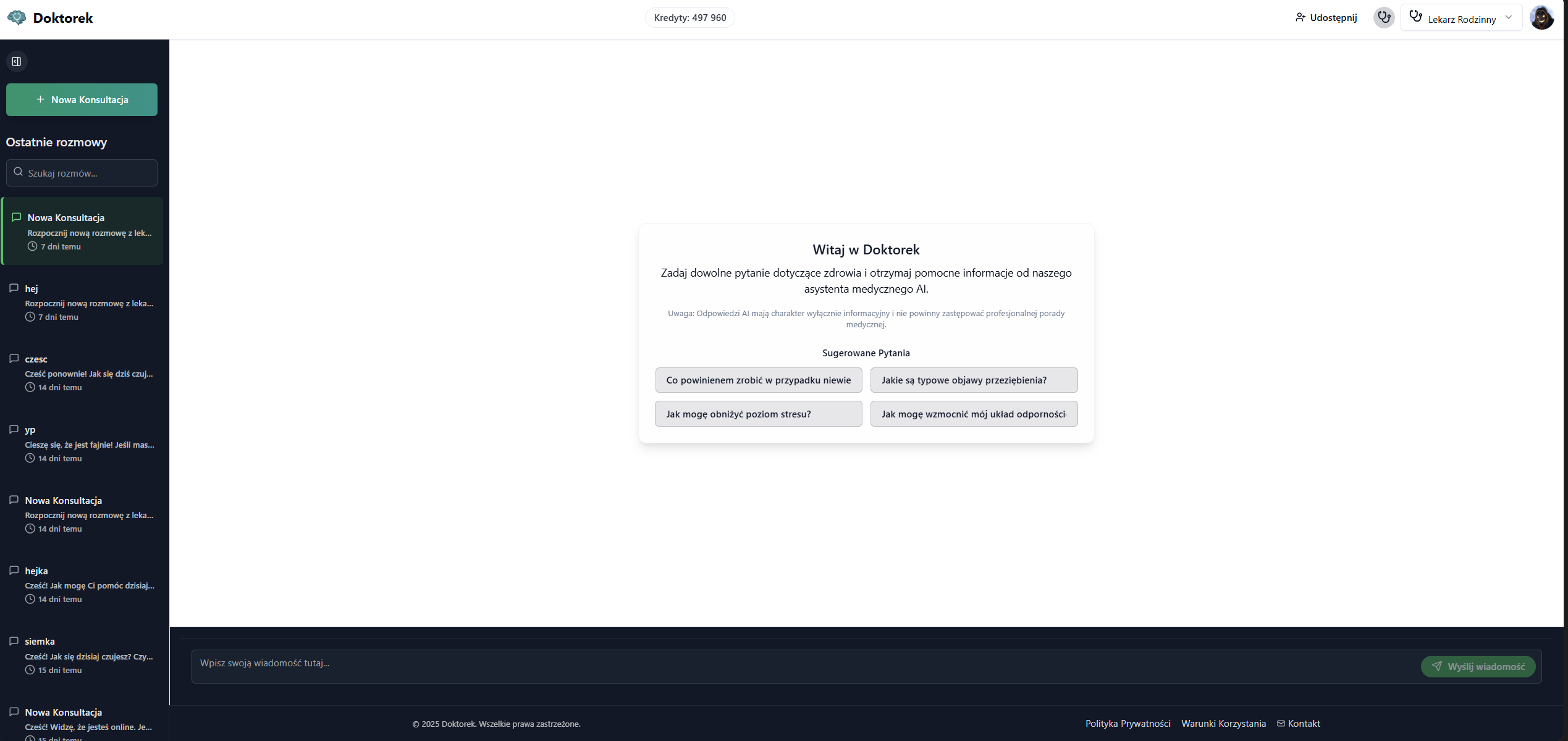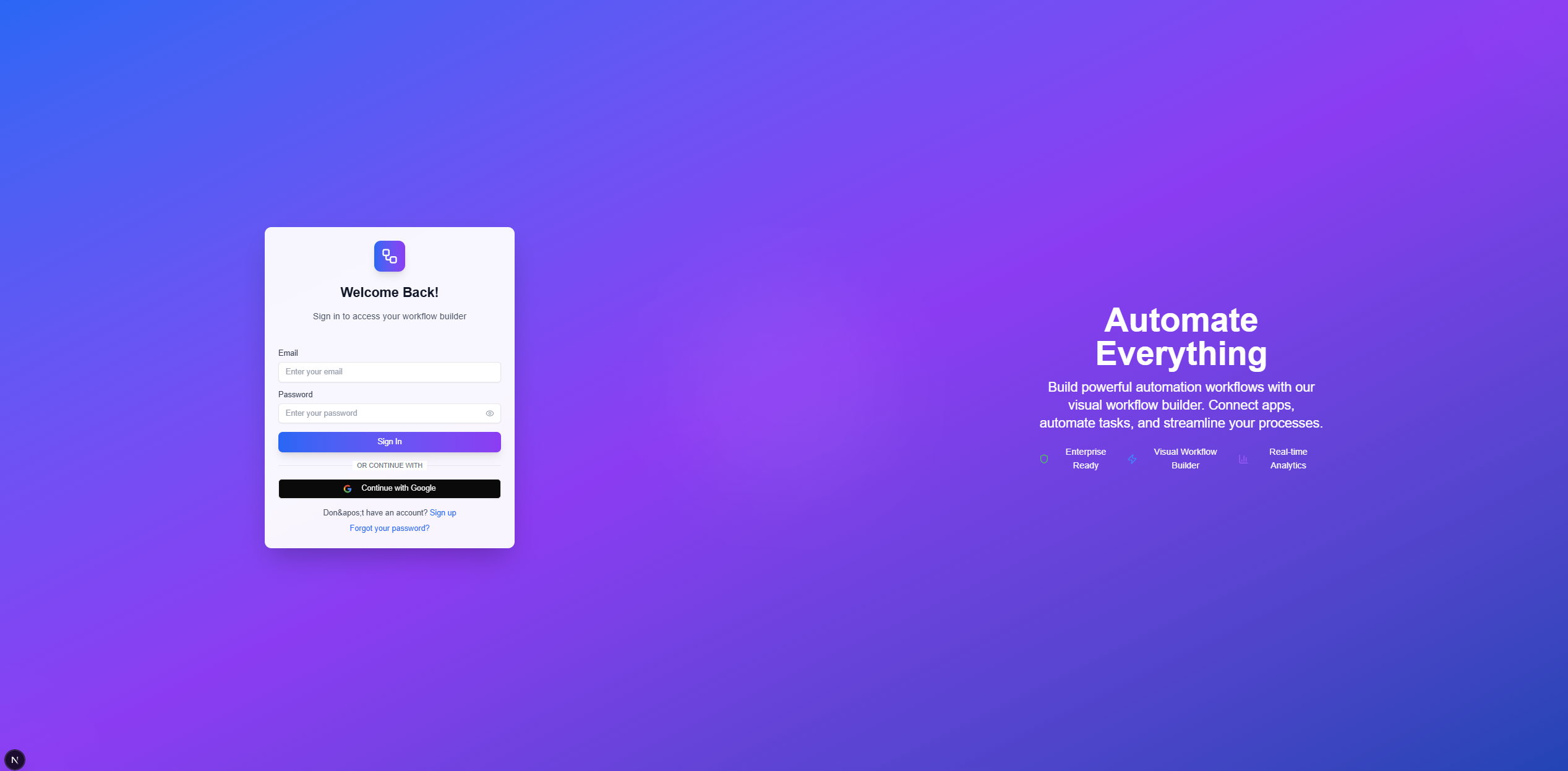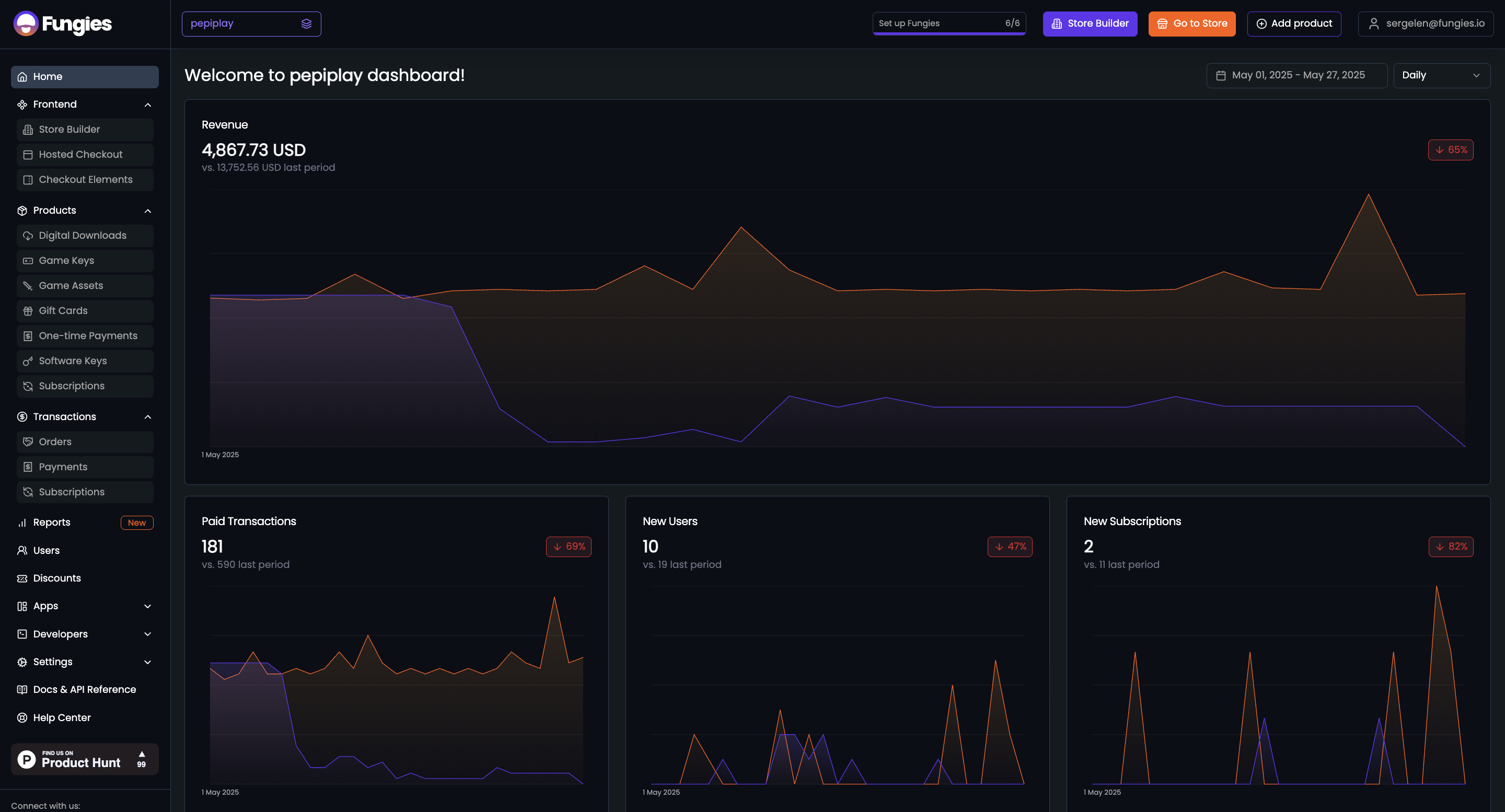Introduction
When a client approached Sweesh.dev with the concept for Doktorek.com—an AI-powered health assistant designed to provide 24/7 medical information to Polish users—they faced a challenging timeline: build and launch the entire platform in just five days.
This case study examines how Sweesh.dev, our boutique AI-first software agency, accomplished this remarkable feat. By leveraging their specialized team structure, AI expertise, and streamlined development process, they delivered a fully functional, user-friendly platform that has already gained the trust of over 5,000 users. For businesses considering similar rapid development projects, this case study offers valuable insights into how specialized smaller teams can deliver faster results without compromising quality.
Doktorek.com represents a new generation of AI-powered healthcare tools—a virtual assistant that provides immediate, reliable health information in conversational Polish language. Users can ask questions about symptoms, seek guidance on common health concerns, and receive information based on comprehensive medical knowledge, all through an intuitive chat interface. The platform serves as a first point of contact for health queries, helping users make informed decisions about when to seek professional medical care.
What makes this project particularly noteworthy isn’t just the product itself, but the speed at which it was conceived, developed, and launched. In an industry where development cycles typically span months, Sweesh.dev’s ability to deliver in less than a week demonstrates the transformative potential of their approach to software development.
The Challenge
Creating an AI-powered health assistant in just five days presented multiple significant challenges for the Sweesh.dev team. The Polish healthcare market, like many around the world, faces increasing pressure from limited access to medical professionals, long wait times for appointments, and a growing demand for immediate health information. Doktorek.com was conceived as a solution to bridge this gap, providing reliable health guidance when traditional healthcare resources aren’t immediately available.
The technical requirements were substantial. The platform needed to:
- Process natural language queries about health concerns in Polish
- Access and interpret a vast database of medical knowledge
- Provide accurate, helpful responses without making diagnoses
- Maintain user privacy and data security
- Offer an intuitive, accessible interface for users of all ages and technical abilities
- Support both free and premium subscription models
Beyond these functional requirements, the five-day timeline created extraordinary pressure. Traditional development approaches, with their lengthy planning phases and sequential workflows, simply wouldn’t work. The team needed to compress what would normally be months of work into less than a week without compromising on quality or reliability—particularly critical for a health-related application where accuracy could impact user wellbeing.
This challenge required rethinking conventional development processes and leveraging AI not just as the product’s feature but as a core component of the development process itself. It demanded a team with specialized expertise who could work in parallel, make decisions quickly, and implement solutions efficiently without the bureaucracy that often slows larger organizations.
The Development Process
The five-day development sprint for Doktorek.com was a masterclass in efficient project execution. Here’s how the Sweesh.dev team broke down this ambitious project into a manageable timeline:
Day 1: Concept Refinement and Architecture Planning
The first day focused on transforming the initial concept into a concrete development plan. Rather than spending weeks on requirements gathering and documentation, the team conducted an intensive four-hour workshop with the client to define:
- Core user journeys and primary use cases
- Essential features for the MVP (Minimum Viable Product)
- Technical architecture and AI model selection
- Data privacy requirements and compliance considerations
By the end of Day 1, the team had created a streamlined project blueprint, selected the technology stack, and established clear priorities. They chose a modern stack including Next.js for the frontend, Node.js for the backend, and integrated with specialized AI services for natural language processing in Polish.
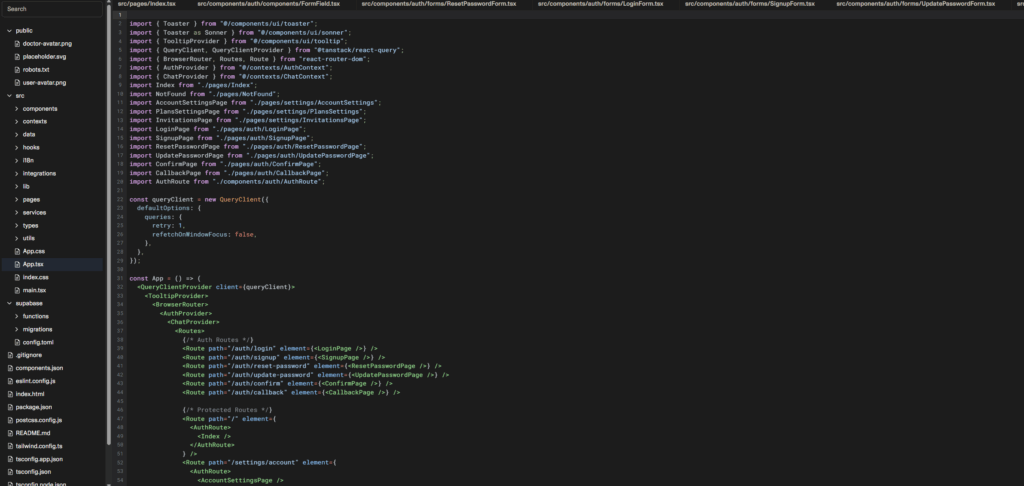
A critical decision made on Day 1 was to implement a “parallel track” development approach, where different team members would simultaneously work on separate components rather than following a traditional sequential process. This approach required precise coordination but dramatically compressed the timeline.
Day 2: Core AI Integration and Backend Development
The second day saw rapid progress on two parallel tracks:
- AI Integration: The team configured and fine-tuned the AI model to understand and respond to health-related queries in Polish. This involved:
- Training the model with medical terminology and common health questions
- Implementing guardrails to prevent the AI from making diagnoses or providing dangerous advice
- Creating fallback mechanisms for queries outside the AI’s knowledge domain
- Backend Development: Simultaneously, backend developers built the API infrastructure, database schema, and user authentication system. They implemented:
- Secure user accounts and data storage
- Session management for conversations
- Credit-based system for the freemium business model
By the end of Day 2, the team had a functioning AI engine that could answer basic health queries and a backend system ready to support user accounts and conversations.
Day 3: Frontend Development and User Experience
The third day focused on creating an intuitive, accessible interface that would make the complex AI technology approachable for users of all ages and technical abilities. The team:
- Designed and implemented a clean, medical-themed UI with a focus on the chat interface
- Created responsive layouts that work seamlessly across desktop and mobile devices
- Implemented real-time conversation functionality with typing indicators and message history
- Built the registration, login, and subscription management flows
The design prioritized simplicity and trust-building elements, using medical-themed visuals and clear language to help users feel comfortable asking health questions.
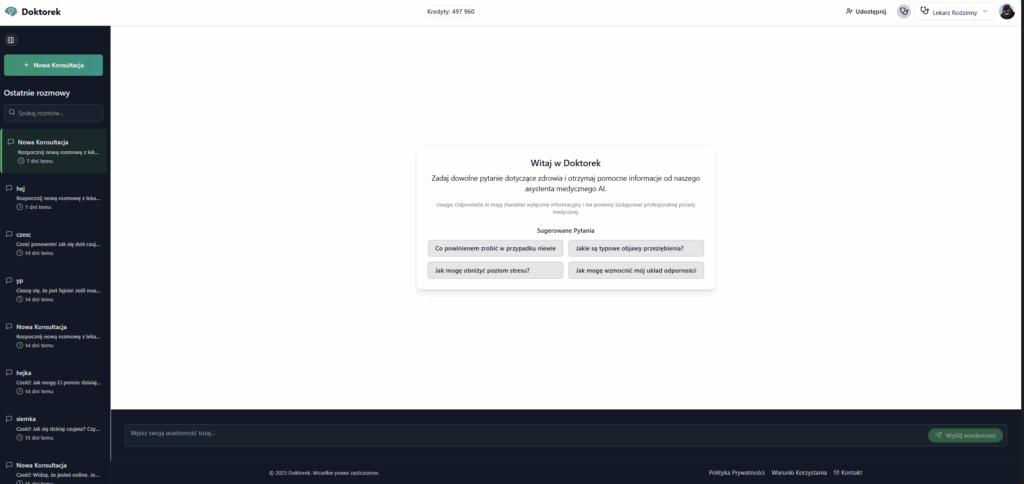
Day 4: Integration, Testing, and Refinement
Day 4 was dedicated to bringing all components together and ensuring they worked flawlessly as a unified system:
- The team integrated the frontend, backend, and AI components
- They conducted extensive testing across different devices and browsers
- They implemented analytics to track user behavior and AI performance
- They refined the AI responses based on internal testing feedback
A particular focus was placed on edge cases and error handling to ensure the system remained robust under unexpected conditions. The team also implemented monitoring systems to track the AI’s performance and flag any potentially problematic responses for human review.
Day 5: Final Polishing and Launch
The final day focused on:
- Addressing any remaining bugs or issues identified during testing
- Optimizing performance for speed and reliability
- Implementing final security measures and conducting vulnerability assessments
- Preparing marketing materials and launch communications
- Deploying to production and monitoring initial user interactions
By the end of Day 5, Doktorek.com was live and accepting its first real users. The team remained on standby during the initial hours after launch to address any issues that might arise as real-world traffic began to flow through the system.
This compressed timeline was only possible because of the team’s specialized expertise, their AI-first approach to development, and their streamlined decision-making process. Traditional development methodologies would have spent the entire five days just on planning and initial setup.
AI Implementation
The AI implementation at the core of Doktorek.com represents one of the most impressive aspects of this rapid development project. Rather than building an AI system from scratch—which would have been impossible within the five-day timeframe—the Sweesh.dev team took a strategic approach to AI integration that balanced speed with quality.
The team selected a foundation model with strong multilingual capabilities and then extensively fine-tuned it specifically for Polish medical terminology and health-related conversations. This approach allowed them to leverage existing AI capabilities while customizing the system for the specific domain and language requirements of Doktorek.com.
A critical aspect of the AI implementation was ensuring the system understood its limitations. The team implemented sophisticated guardrails to prevent the AI from:
- Attempting to diagnose specific conditions
- Recommending prescription medications
- Providing definitive medical advice that should come from healthcare professionals
Instead, the system was designed to provide general health information, explain medical concepts, suggest when users should seek professional care, and help users understand their symptoms in context. These guardrails were implemented through a combination of prompt engineering, output filtering, and continuous monitoring.
The team also addressed the challenge of medical accuracy by connecting the AI to a curated database of reliable health information. Rather than allowing the AI to generate medical information based solely on its training data, the system was designed to retrieve and synthesize information from verified medical sources. This approach significantly improved the accuracy and reliability of responses.
Privacy and data security were paramount concerns given the sensitive nature of health-related conversations. The team implemented end-to-end encryption for all conversations and designed the system to minimize the storage of personally identifiable information. User queries are processed in a way that separates identity from the content of health questions, providing an additional layer of privacy protection.
Perhaps most impressively, the team implemented a continuous learning system that allows the AI to improve over time based on user interactions. The system flags uncertain responses for human review and incorporates feedback to enhance future performance. This approach ensures that Doktorek.com becomes more accurate and helpful with each user interaction, creating a virtuous cycle of improvement.
The AI implementation also included language processing specifically optimized for conversational Polish, including understanding of colloquial terms for symptoms and health conditions. This attention to linguistic nuance makes the system feel more natural and accessible to users who might not be familiar with formal medical terminology.
Key Features Delivered
Despite the compressed timeline, Doktorek.com launched with a comprehensive set of features that make it a valuable health resource for Polish users. The platform successfully delivers:
24/7 Availability
Unlike traditional healthcare services with limited hours, Doktorek.com provides round-the-clock access to health information. Users can submit questions at any time—whether it’s the middle of the night or during a holiday—and receive immediate responses. This constant availability addresses a critical gap in healthcare access, particularly for non-emergency concerns that nonetheless cause anxiety and uncertainty.
Comprehensive Medical Knowledge Base
The AI assistant draws on an extensive knowledge base covering diverse medical specialties including general medicine, cardiology, dermatology, psychology, dentistry, and oncology. This breadth of knowledge allows the system to address a wide range of health queries, from common conditions to more specialized concerns. The knowledge base is structured to provide contextual information that helps users understand not just what might be happening but why.
Natural Language Processing in Polish
The system excels at understanding health questions posed in conversational Polish, including colloquial terms and regional expressions. Users don’t need to know precise medical terminology to get helpful information—they can describe symptoms in their own words, just as they would to a friend or family member. This natural language capability significantly lowers the barrier to access for users of all educational backgrounds.
User-Friendly Chat Interface
The interface was designed with simplicity as its guiding principle. Users are presented with a clean, intuitive chat window where they can type questions and receive responses in a conversational format. The design minimizes distractions and technical complexity, making the service accessible to older users who might be less comfortable with technology. The mobile-responsive design ensures a seamless experience across devices, allowing users to seek information whether they’re at home on a computer or on the go with a smartphone.
Privacy and Discretion
The platform was built with strong privacy protections, allowing users to ask sensitive health questions without fear of judgment or exposure. All conversations are encrypted, and the system minimizes the collection of personally identifiable information. This privacy-first approach encourages users to be forthcoming about their concerns, leading to more relevant and helpful information.
Freemium Business Model
Doktorek.com launched with a fully implemented business model that balances accessibility with sustainability. New users can try the service for free with a limited number of questions, while a subscription option provides unlimited access for regular users. The payment processing system, user account management, and credit tracking were all implemented within the five-day development window.
Conversation History and Continuity
The system maintains conversation history, allowing users to reference previous interactions and build on earlier questions. This continuity creates a more natural interaction pattern and prevents users from having to repeat information across multiple sessions. The conversation history feature also allows users to track how their health concerns evolve over time.
Clear Limitations and Medical Disclaimers
Throughout the user experience, Doktorek.com clearly communicates its role as an information provider rather than a replacement for professional medical care. The system is designed to help users make informed decisions about when to seek professional help, providing guidance without overstepping into diagnosis or treatment recommendations.
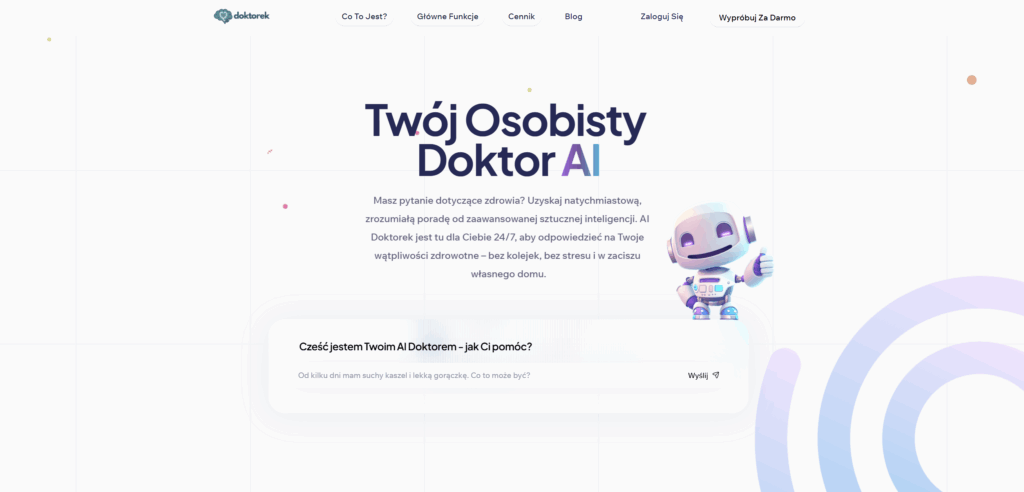
Results and Impact
The launch of Doktorek.com after just five days of development represents a remarkable achievement in rapid software delivery. The results speak to both the effectiveness of Sweesh.dev’s approach and the value of the product itself.
User Adoption
Within a short period after launch, Doktorek.com attracted over 5,000 users—a testament to both the market need for such a service and the quality of the implementation. This rapid adoption occurred with minimal marketing, relying primarily on word-of-mouth and organic discovery, suggesting that the product successfully addresses a genuine need in the market.
User testimonials highlight the platform’s value in various scenarios:
- Providing guidance during late-night health concerns when doctor’s offices are closed
- Helping users determine whether symptoms warrant immediate medical attention
- Explaining medical terminology and concepts in accessible language
- Offering peace of mind for parents with questions about children’s health issues
Technical Performance
Despite the compressed development timeline, Doktorek.com has demonstrated robust technical performance:
- The AI system consistently provides relevant, helpful responses to a wide range of health queries
- The platform maintains fast response times even during peak usage periods
- Uptime has remained above 99.9%, with no significant outages since launch
- The system has scaled smoothly to accommodate growing user numbers without performance degradation
Business Outcomes
From a business perspective, the project has delivered exceptional value:
- The rapid development process significantly reduced time-to-market, allowing the client to start generating revenue and gathering user feedback much earlier than a traditional development approach would have permitted
- The freemium model has shown promising conversion rates, with approximately 15% of free users upgrading to paid subscriptions
- The early launch has provided valuable market validation and user behavior data that is informing future development priorities
- The client has gained a first-mover advantage in the Polish AI health assistant market
Healthcare Impact
Beyond the business metrics, Doktorek.com is making a meaningful impact on healthcare access:
- Users report reduced anxiety about health concerns thanks to immediate information access
- The service is helping to alleviate pressure on emergency services by helping users determine when emergency care is truly needed
- The platform is improving health literacy by explaining medical concepts in accessible language
- Users in rural areas with limited healthcare access particularly benefit from the 24/7 availability of health information
The success of Doktorek.com demonstrates that with the right team, approach, and technology, it’s possible to deliver sophisticated AI-powered applications in timeframes that would be considered impossible under traditional development models.
Lessons Learned
The successful five-day development of Doktorek.com yielded valuable insights that can benefit any organization considering rapid software development:
Specialized Expertise Trumps Team Size
The Sweesh.dev team demonstrated that a small group of specialists with complementary skills can outperform much larger teams when it comes to development speed. Each team member brought deep expertise in their domain, eliminating the learning curve that often slows projects down. This specialized knowledge allowed them to make informed decisions quickly and implement solutions efficiently without extensive research or trial-and-error.
AI-First Development Creates Multiplicative Effects
By embracing AI not just as a product feature but as a development accelerator, the team achieved productivity levels that would be impossible with traditional methods. They used AI tools to generate code scaffolding, automate testing, and streamline documentation, creating a virtuous cycle where AI helped build AI. This approach represents a paradigm shift in development methodology that fundamentally changes what’s possible within tight timeframes.
Parallel Processing Beats Sequential Development
The team’s approach of working on multiple components simultaneously—rather than following a traditional waterfall or even agile sprint structure—dramatically compressed the timeline. This parallel processing required exceptional coordination and clear interfaces between components, but the payoff in development speed was substantial.
Decision Velocity Matters More Than Perfect Decisions
In traditional development environments, teams often spend days or weeks deliberating over technical choices, seeking the “perfect” solution. The Sweesh.dev team embraced a philosophy of “good decisions now over perfect decisions later,” recognizing that forward momentum was critical in such a compressed timeline. They made quick, informed decisions and moved forward, addressing any issues that arose rather than getting stuck in analysis paralysis.
Clear Scope Definition Is Essential
Despite the rapid pace, the team invested significant effort on Day 1 to clearly define what was in and out of scope for the initial launch. This clarity allowed them to focus exclusively on must-have features and avoid the scope creep that often derails software projects. They maintained discipline throughout the process, deferring interesting but non-essential features to post-launch updates.
Continuous Integration Prevents Last-Minute Chaos
Rather than waiting until Day 4 or 5 to integrate components, the team established a continuous integration process from Day 2 onward. This approach meant that integration issues were identified and addressed immediately rather than creating a crisis near the deadline. The result was a smoother development process with fewer last-minute surprises.
Direct Client Communication Accelerates Feedback Loops
The team maintained open communication channels with the client throughout the five-day sprint, getting immediate feedback on implementations and making adjustments in real-time. This direct communication eliminated the delays and misunderstandings that often occur when feedback passes through multiple layers of management.
Recommendations for Businesses
For organizations considering their own software development projects, the Doktorek.com case study offers valuable recommendations:
Embrace the Power of Small, Specialized Teams
The traditional approach of assembling large development teams often leads to diminishing returns due to communication overhead and coordination challenges. Consider instead working with smaller, specialized teams where each member brings deep expertise and can contribute immediately without extensive onboarding.
A boutique agency like Sweesh.dev offers several advantages over larger firms:
- Faster decision-making with fewer approval layers
- Direct access to senior talent rather than junior developers supervised by seniors
- Greater accountability and personal investment in project success
- More flexible and adaptive approaches to challenges
When evaluating potential development partners, prioritize specialized expertise and proven track records over team size or company age. Ask for specific examples of rapid development successes and how they were achieved.
Prioritize Speed to Market
In today’s competitive landscape, being first to market often provides significant advantages in terms of user acquisition, feedback gathering, and market positioning. Rather than spending months perfecting a product before launch, consider:
- Identifying the minimum viable feature set that delivers real value
- Launching quickly with core functionality
- Gathering user feedback to guide subsequent development
- Iterating rapidly based on real-world usage data
This approach reduces the risk of building features users don’t want and allows you to adapt to market realities faster than competitors with longer development cycles.
Leverage AI Throughout the Development Process
AI isn’t just a feature to include in products—it’s a transformative tool for the development process itself. Look for development partners who:
- Use AI to accelerate coding, testing, and documentation
- Have experience building AI-powered applications
- Understand both the capabilities and limitations of current AI technologies
- Can integrate AI components without requiring extensive custom development
The right application of AI in development can compress timelines by 50% or more while maintaining or even improving quality.
Define Clear Success Criteria
Before beginning rapid development, clearly articulate what success looks like in concrete, measurable terms. For Doktorek.com, success criteria included:
- Functional AI chat interface responding accurately to health queries
- User registration and subscription management
- Mobile-responsive design
- Launch within five days
This clarity helps the development team prioritize effectively and make appropriate trade-offs when necessary.
Prepare Your Organization for Rapid Development
To maximize the benefits of working with a specialized, fast-moving team:
- Designate a single decision-maker who can provide quick feedback
- Clear calendars for key stakeholders during critical development periods
- Prepare necessary assets (branding materials, content, etc.) in advance
- Be ready to test and provide feedback on short notice
Organizations that can match the development team’s pace with their own rapid feedback and decisions will see the best results.
Balance Speed with Sustainability
While the five-day development of Doktorek.com demonstrates what’s possible with the right team and approach, not every project requires such an aggressive timeline. Consider:
- The business value of getting to market quickly
- The complexity and scope of your specific requirements
- The availability of key stakeholders for feedback and decisions
- The criticality of the application and tolerance for refinement after launch
For many projects, a slightly longer timeline with more built-in testing and refinement may be appropriate, while still benefiting from the specialized team approach.
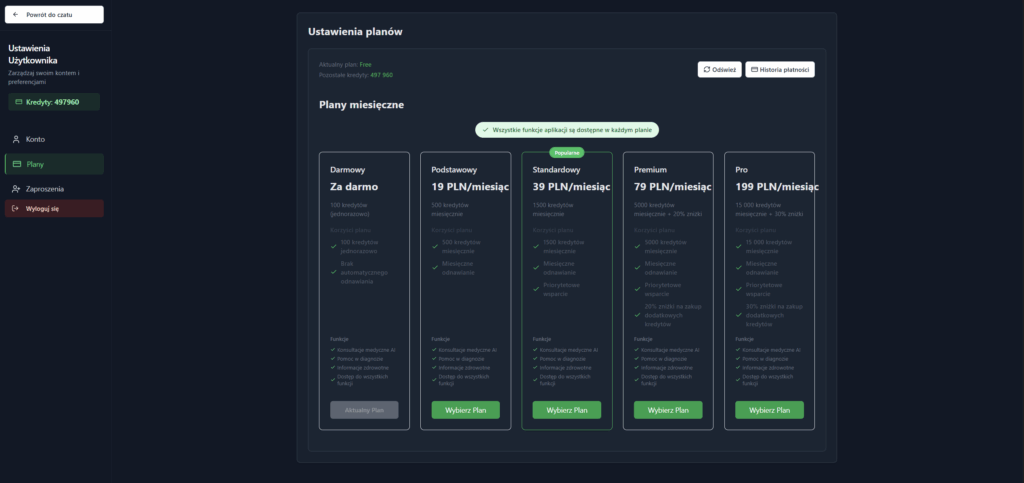
Conclusion
The development of Doktorek.com in just five days stands as a compelling testament to what’s possible when the right team, with the right expertise and approach, tackles a well-defined challenge. This case study demonstrates that the traditional assumptions about software development timelines can be fundamentally challenged when organizations embrace specialized teams, AI-powered development, and streamlined decision-making processes.
Sweesh.dev’s achievement with Doktorek.com wasn’t merely about speed—it was about delivering a fully functional, valuable product that immediately began serving users and generating business value. The platform’s rapid adoption by over 5,000 users validates both the market need and the quality of the implementation, despite the compressed timeline.
For businesses facing competitive markets and rapidly evolving customer expectations, the lessons from this case study offer a potential competitive advantage. By partnering with specialized boutique agencies rather than large, generalist firms, organizations can dramatically accelerate their digital initiatives without sacrificing quality.
The AI-powered health assistant that Sweesh.dev created represents just one application of their rapid development methodology. The same approach can be applied across industries and use cases, from fintech to e-commerce, education to entertainment. Any organization that values speed to market, efficient use of development resources, and innovative application of AI technologies can benefit from this model.
As we look to the future, the line between traditional software development and AI-powered creation will continue to blur. Teams that can effectively harness AI not just as a product feature but as a development accelerator will increasingly outperform those stuck in conventional methodologies. Sweesh.dev’s five-day development of Doktorek.com offers a glimpse of this future—where ideas can transform into market-ready products in days rather than months, creating new possibilities for innovation and competitive advantage.
For organizations ready to accelerate their digital initiatives, the message is clear: with the right specialized team, even the most ambitious development timelines can be achieved. The question is no longer whether rapid development is possible, but whether your organization is prepared to embrace the approach that makes it happen.
